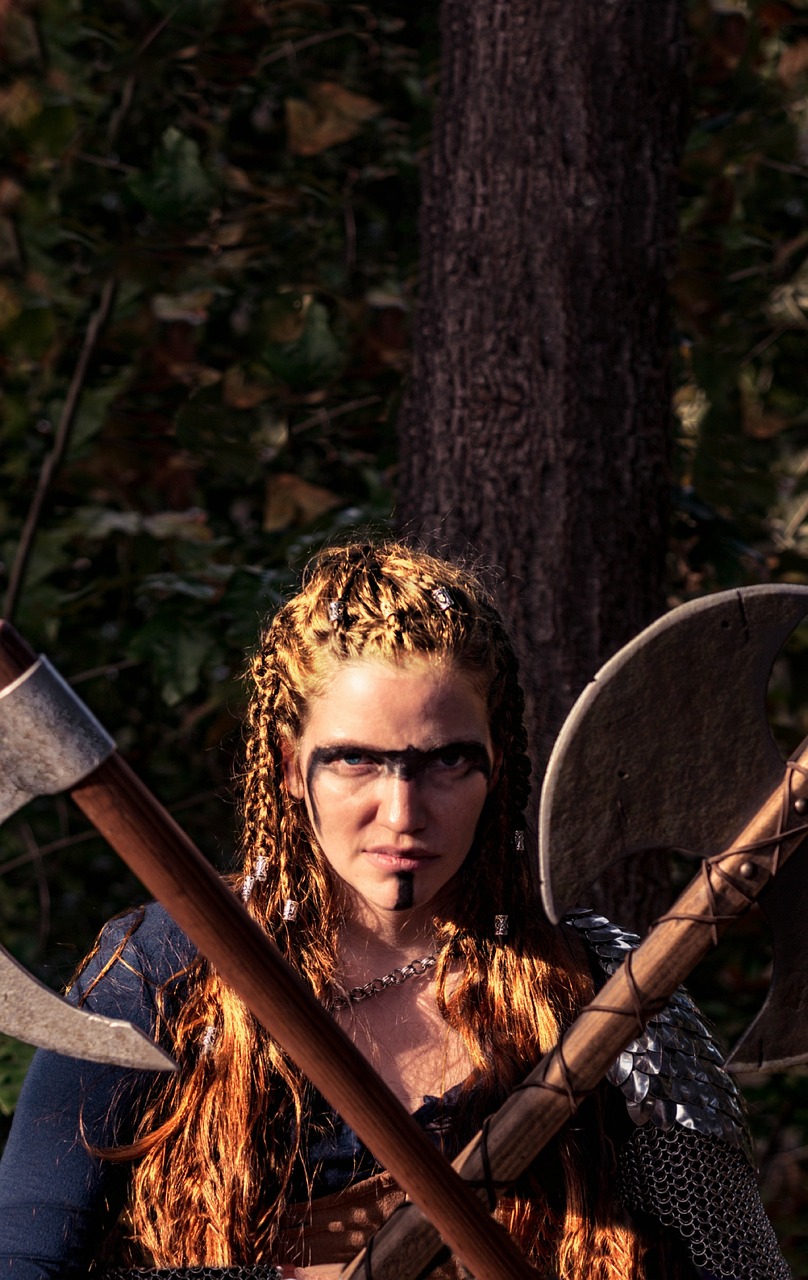Viking culture has captivated the public’s interest in recent years, especially through the stories of legendary figures like Ragnar, Lagertha, and Björn Ironside. Many enthusiasts are delving into the ancient symbolism found in Viking runes and emblems. This exploration reveals the rich meanings behind various Viking symbols, including their significance in tattoos or as talismans. Perhaps you will feel inspired to get an inked emblem of your own after learning about these fascinating symbols.
As with many ancient civilizations, the Viking culture is steeped in symbolism, filled with profound meanings. While historians debate the extent to which Vikings adorned their bodies with these symbols, we can explore the essential Viking icons that have made an indelible mark on their legacy.
1. Valknut – Symbol of Odin
One of the most prominent Viking symbols is the Valknut, also referred to as “Heart of Hrunger” or “knot of the slain.” Comprised of three interlocking triangles, it is intimately associated with Odin, the chief god in Norse mythology. The intertwined triangles may signify the connection between life, death, and the afterlife. Extensive archaeological research has uncovered the Valknut in numerous Germanic burial sites, where it served to honor valiant Nordic warriors.
Some believe the Valknut represented Odin’s chosen warriors, known as Einherjar, indicating their readiness to embrace death on the battlefield and join him in Valhalla. The term “Val” translates to “slain” or “the chosen,” while “-knut” means “knot,” thus symbolizing the link between a warrior’s fate and their battlefield achievements. Wearing the Valknut, whether as a tattoo or talisman, signifies a commitment to Odin and the ideals of bravery in battle. It remains one of the most powerful symbols in Norse mythology, still found on Viking jewelry today.
2. The Horn of Odin
A central figure in Viking culture, Odin commands respect as the Father of All Gods. The Horn of Odin is among the most significant symbols, associated with various rituals. It embodies the three mystical brews of Odhroerir and is particularly prevalent across Scandinavia.
3. Thor’s Hammer – Mjolnir
Admired by warriors, Thor is a crucial deity in Viking lore, symbolizing strength and protection. His hammer, Mjolnir, often worn as a protective talisman, signifies resilience and is an essential part of the northern heritage.
4. The Vegvisir – The Viking Compass
While not exclusively a Viking symbol, the Vegvisir is deeply embedded in Icelandic tradition. The intricate design serves as a compass, symbolizing guidance through tumultuous storms and uncharted paths.
5. Aegishjalmr – Helm of Awe
The Helm of Awe is another powerful symbol representing physical, mental, and spiritual protection. Its circular formation consists of eight arms, symbolizing invulnerability and strength, serving as a guardian for warriors throughout Viking history.
6. Gungnir – Odin’s Unerring Spear
Named from the Old Icelandic word for “staggering,” Gungnir is Odin’s magical spear that never fails to hit its mark. Legend speaks of Loki’s wager with dwarves, resulting in the creation of several legendary weapons, including Mjolnir.
7. Hugin & Munin – The Ravens
These twin ravens serve Odin, acting as messengers providing insight into the Nine Worlds. Daily, they traverse the realms, gathering knowledge to relay back to their master.
8. Yggdrasil – The World Tree
Yggdrasil, the evergreen ash tree, is the central axis of the universe in Norse cosmology. Its branches connect the nine realms of myth, while its roots delve into crucial locations, including Asgard, Jotunheim, and Niflheim.
9. Viking Runes – The Magical Futhark
The Vikings harnessed the significance of runes, employing them for divination, prediction of battles, and protection. Each rune carries unique meanings linked to joy, valor, and communication.
10. Svefnthorn
Known as the “thorn of sleep,” Svefnthorn appears in various sagas and folklore, used to induce deep sleep in adversaries. Its presence in tales embodies both magic and mystery within Norse mythology.
11. Fenrir – The Giant Wolf
Fenrir, a wolf of immense power rumored to bring destruction, embodies the complexity of the wolf in Viking tales. He is linked to Loki and represents fear juxtaposed with loyalty.
12. Jormungandr – The Midgard Serpent
This colossal sea serpent, a child of Loki, encircles the Earth, holding it in place. Jormungandr is foretold to wreak havoc during Ragnarök, representing nature’s formidable power.
13. Gullinbursti – The Divine Wild Boar
Gullinbursti symbolizes fertility and divine prowess within the Viking lore.
14. Bear – Berserker Symbol
The bear serves as a significant emblem of strength and bravery in Nordic culture. It also represents the Berserkers, the fierce warrior elite known for their formidable combat skills.
15. The Web of Wyrd
Symbolizing fate, the Wyrd Web is intricately woven with runes that represent the interconnected destinies of all beings.
16. Viking Longship & Drakkar
Unmatched in design, Viking ships were vessels of exploration, wealth, and warfare. The Drakkar, a blend of sailing and rowing capabilities, served as a tool of conquest, adorned with dragon figureheads to instill fear in adversaries.
17. Viking Axe
The Viking axe exemplifies their strength and valor, often wielded in battle, showcasing the craftsmanship of the Vikings.
18. Triquetra – The Celtic Knot
The Triquetra features three intertwining triangles, its interpretations ranging from Christian symbolism to ancient notions of eternity and the cycles of life.
19. Sleipnir – Odin’s Eight-Legged Horse
Sleipnir, with eight legs, is considered the fastest steed in Norse mythology, capable of traversing both the skies and seas, carrying Odin.
Through understanding these symbols, we can appreciate the complexity and depth of Viking culture and the enduring legacy they have left behind.



